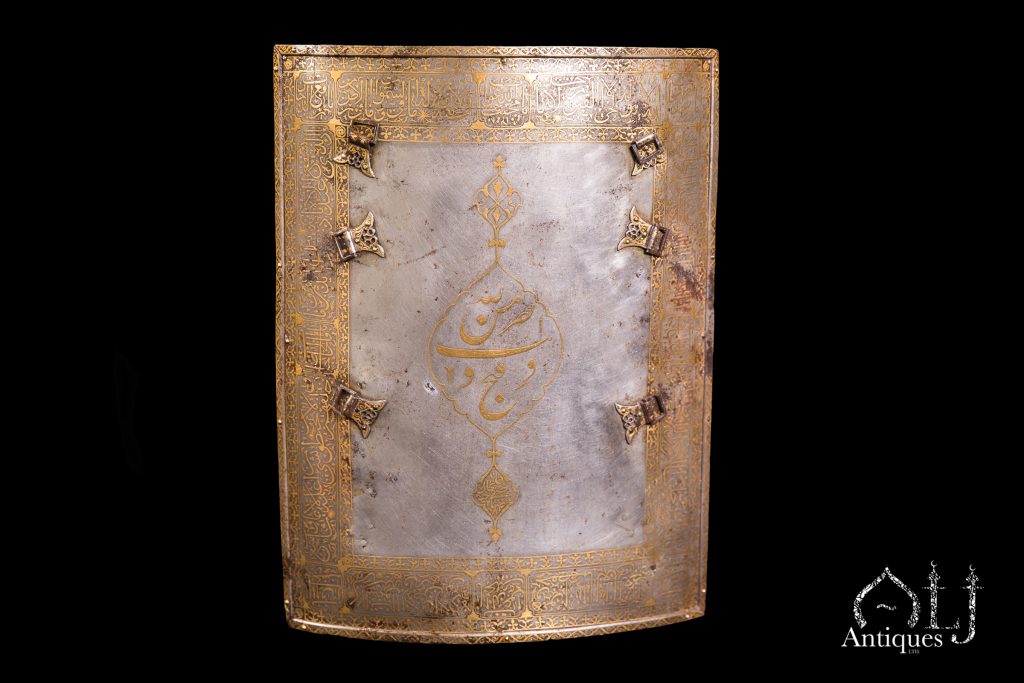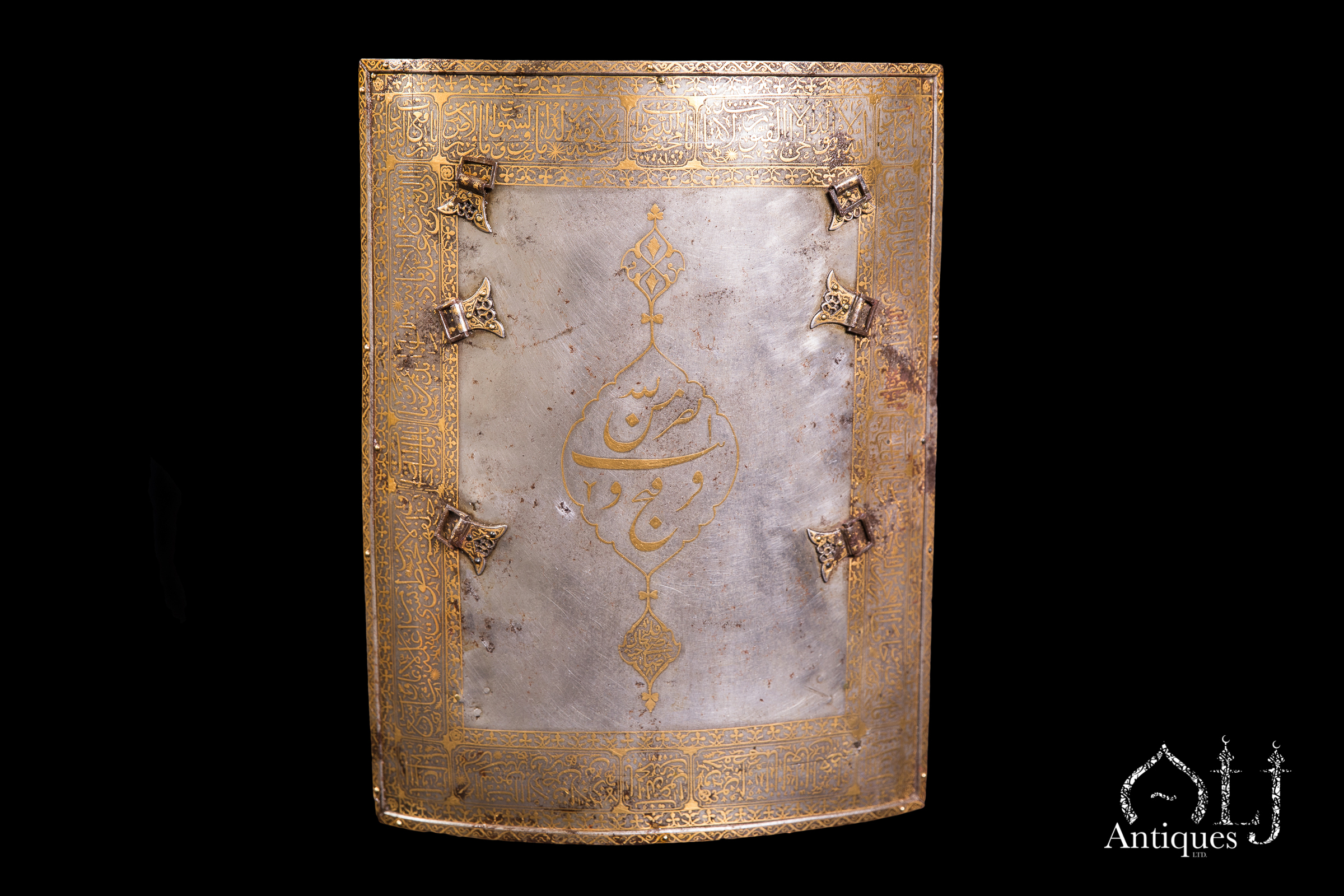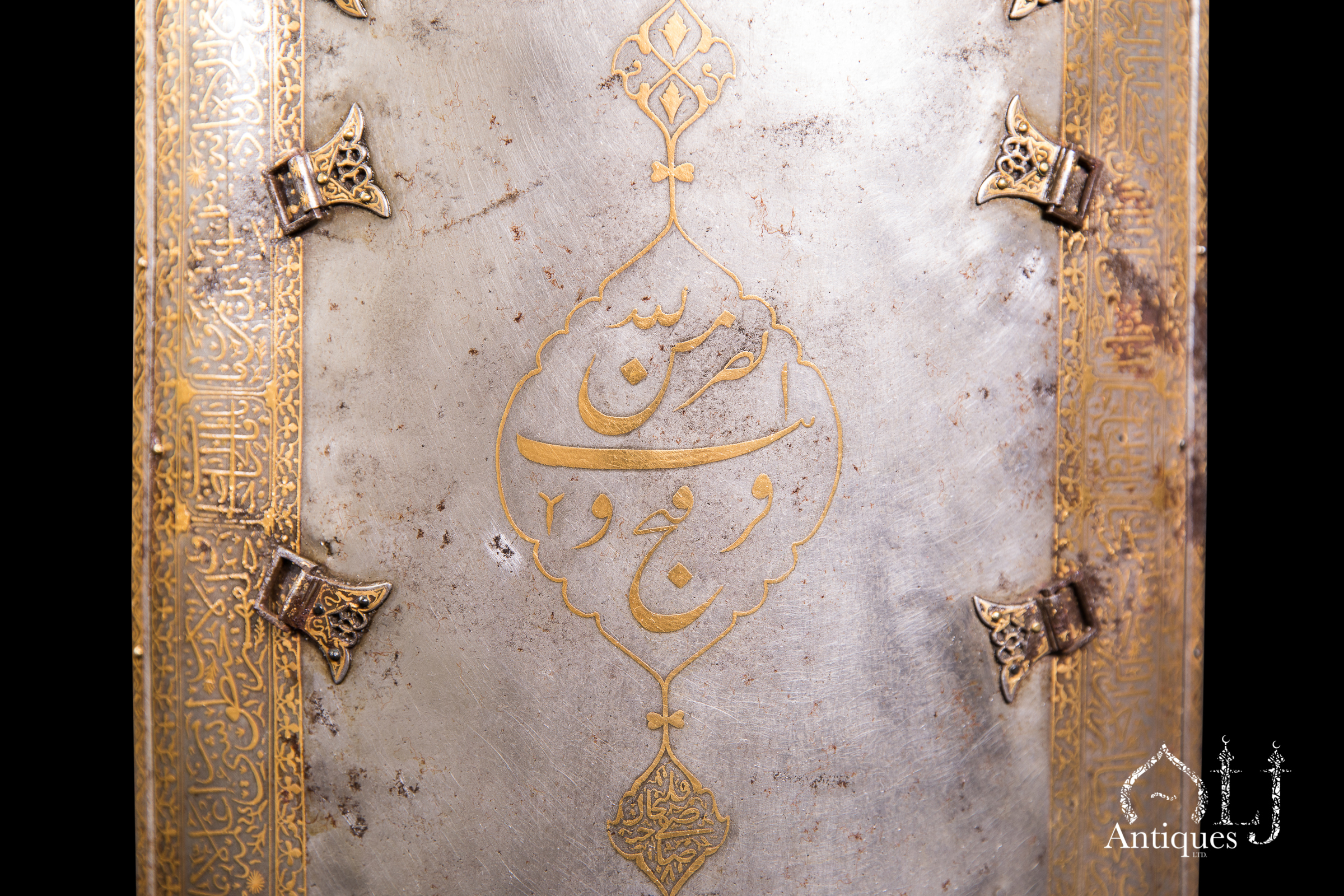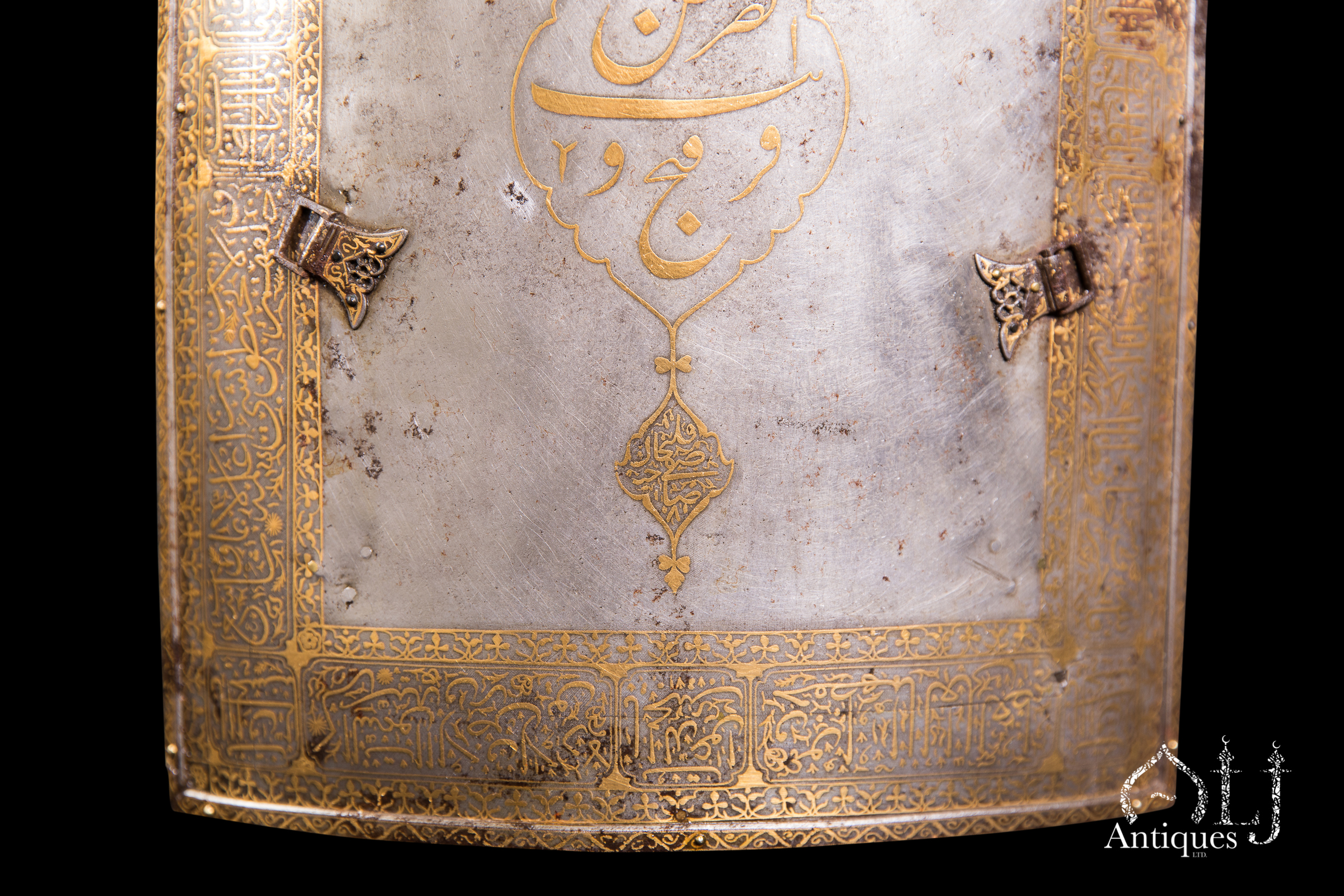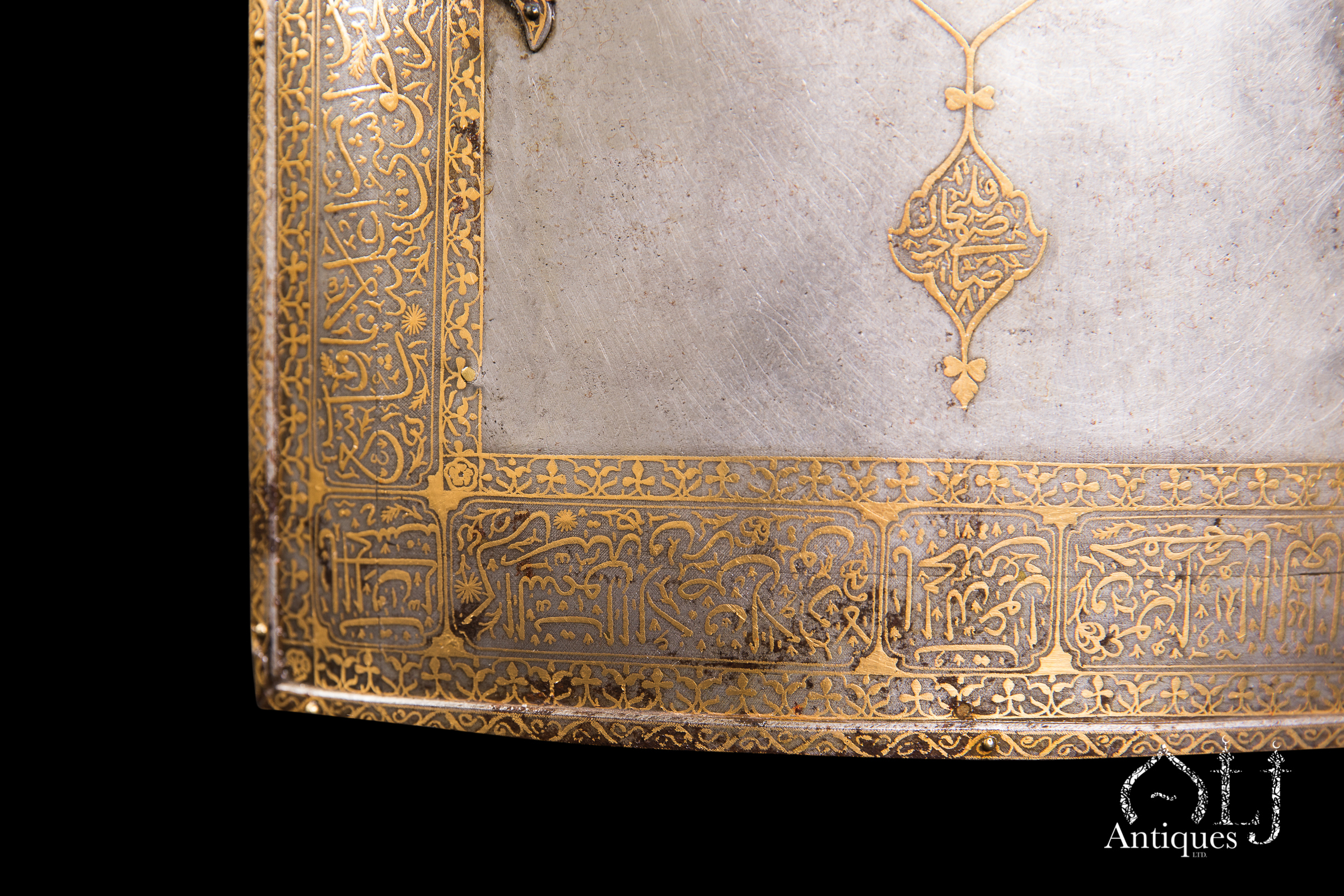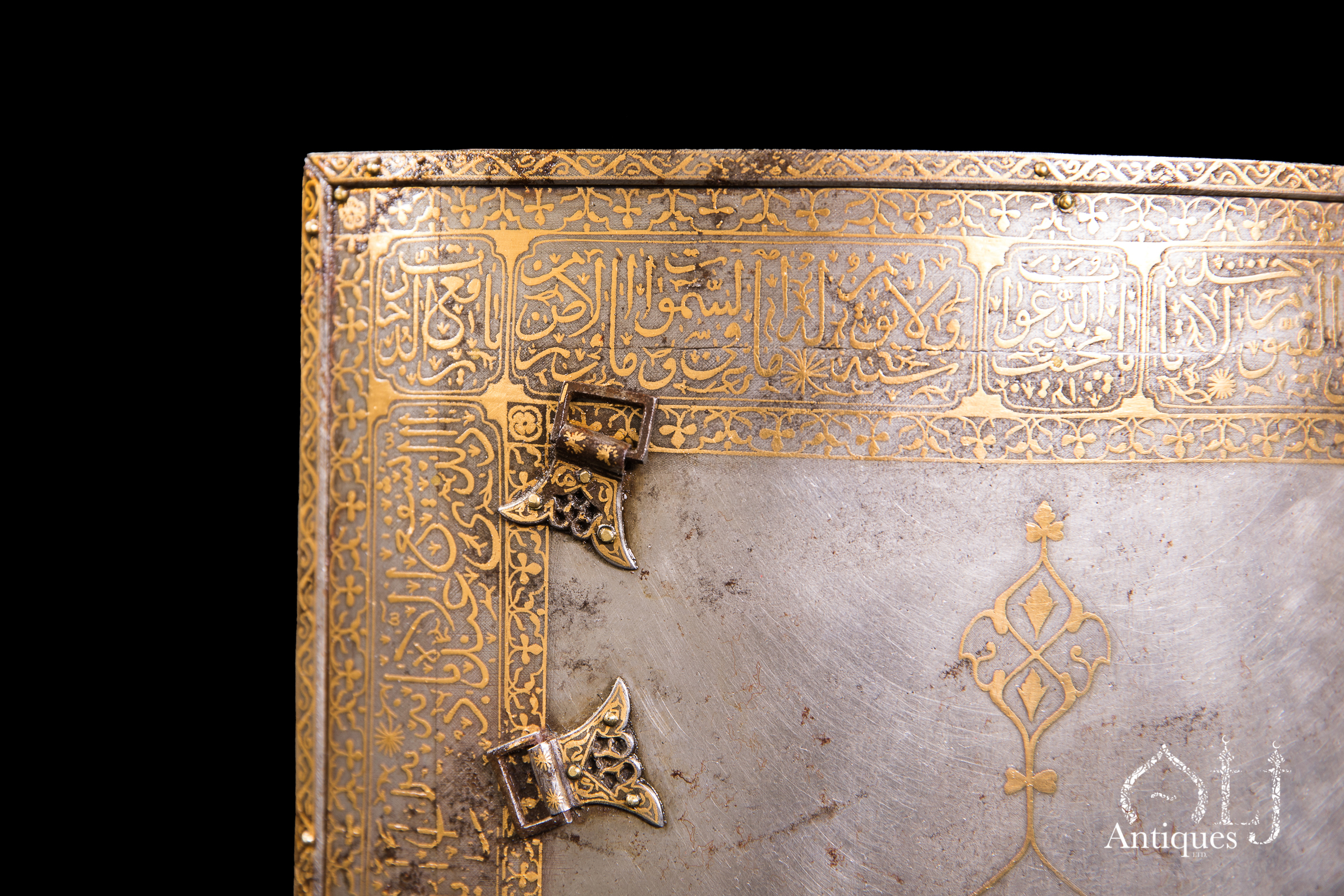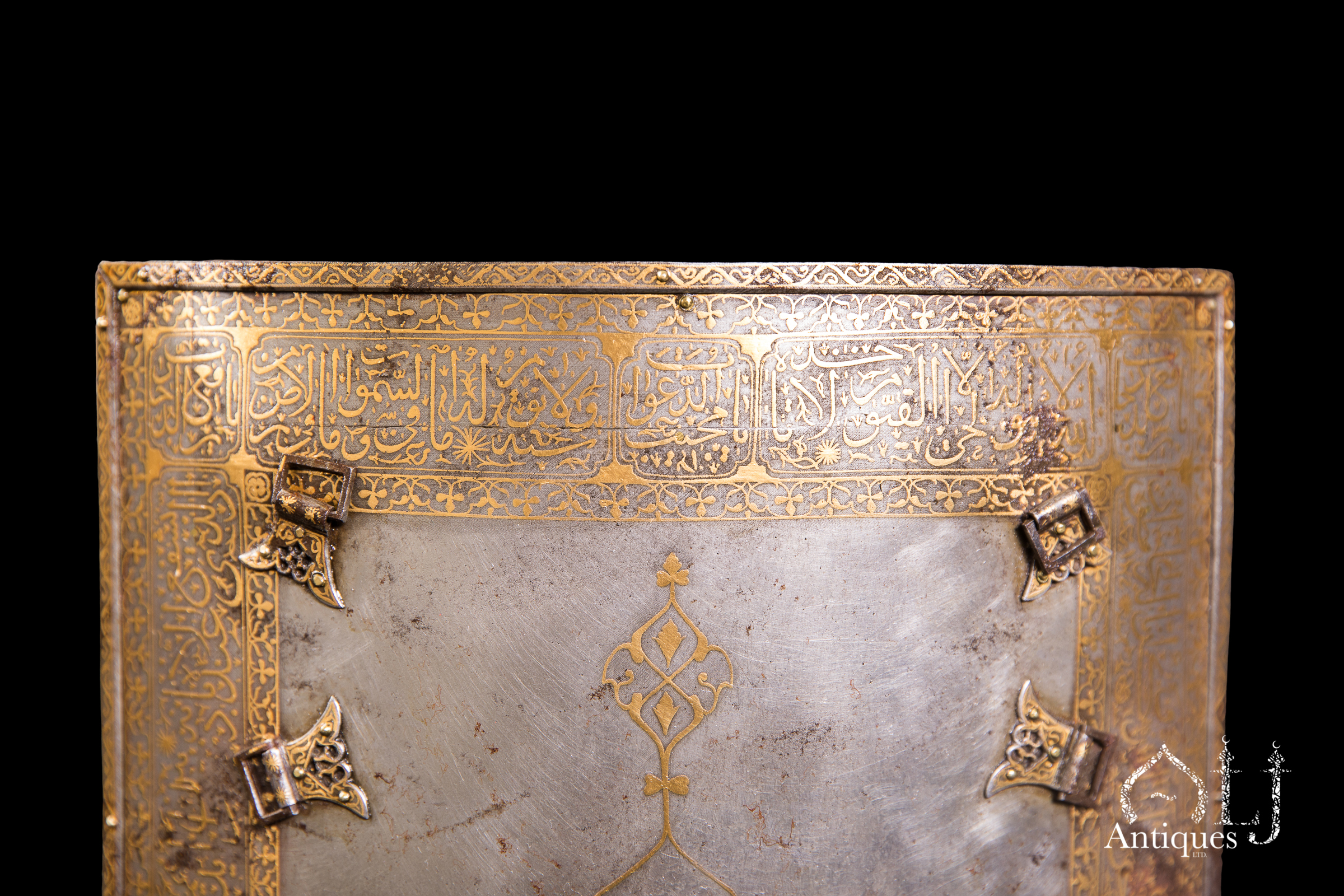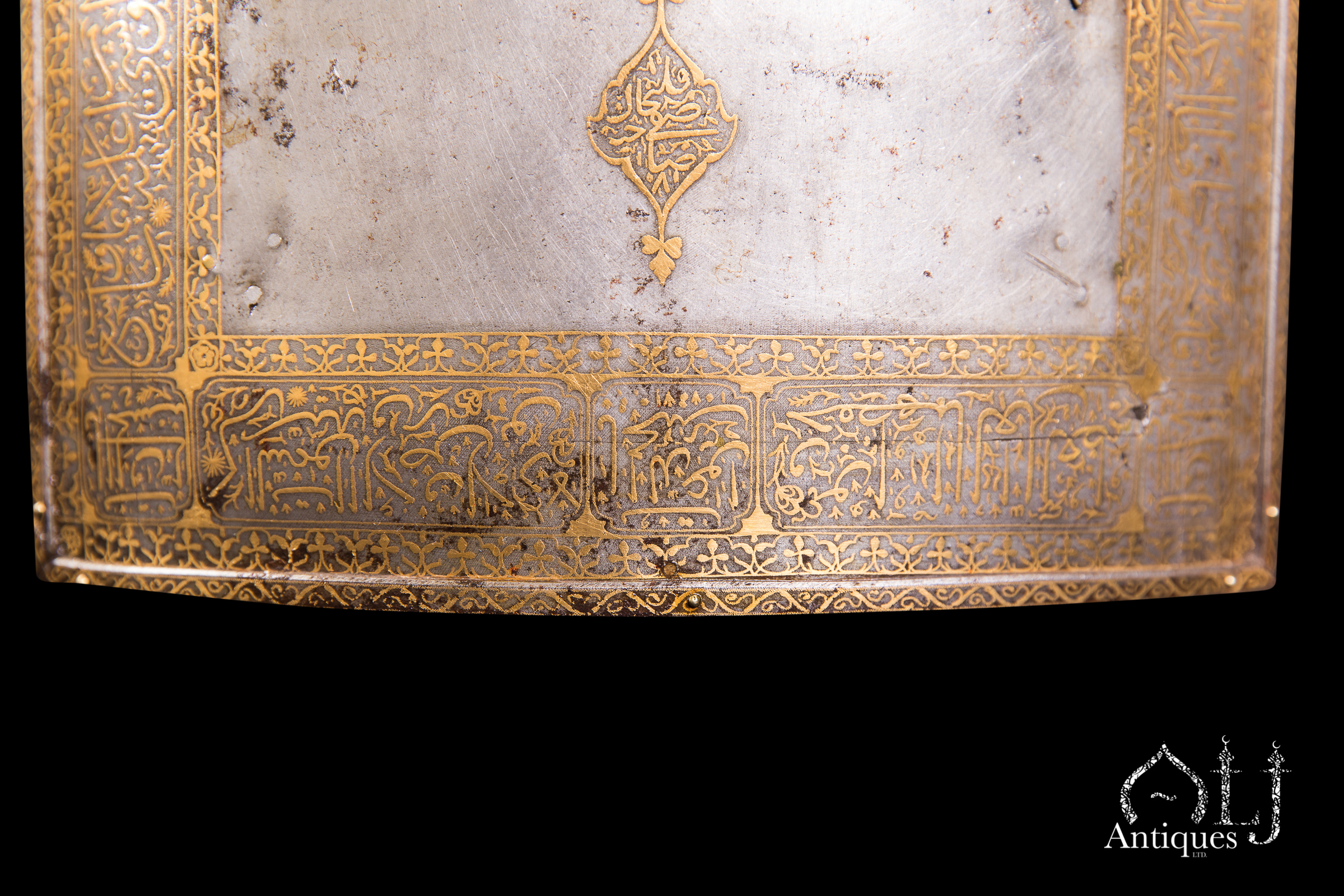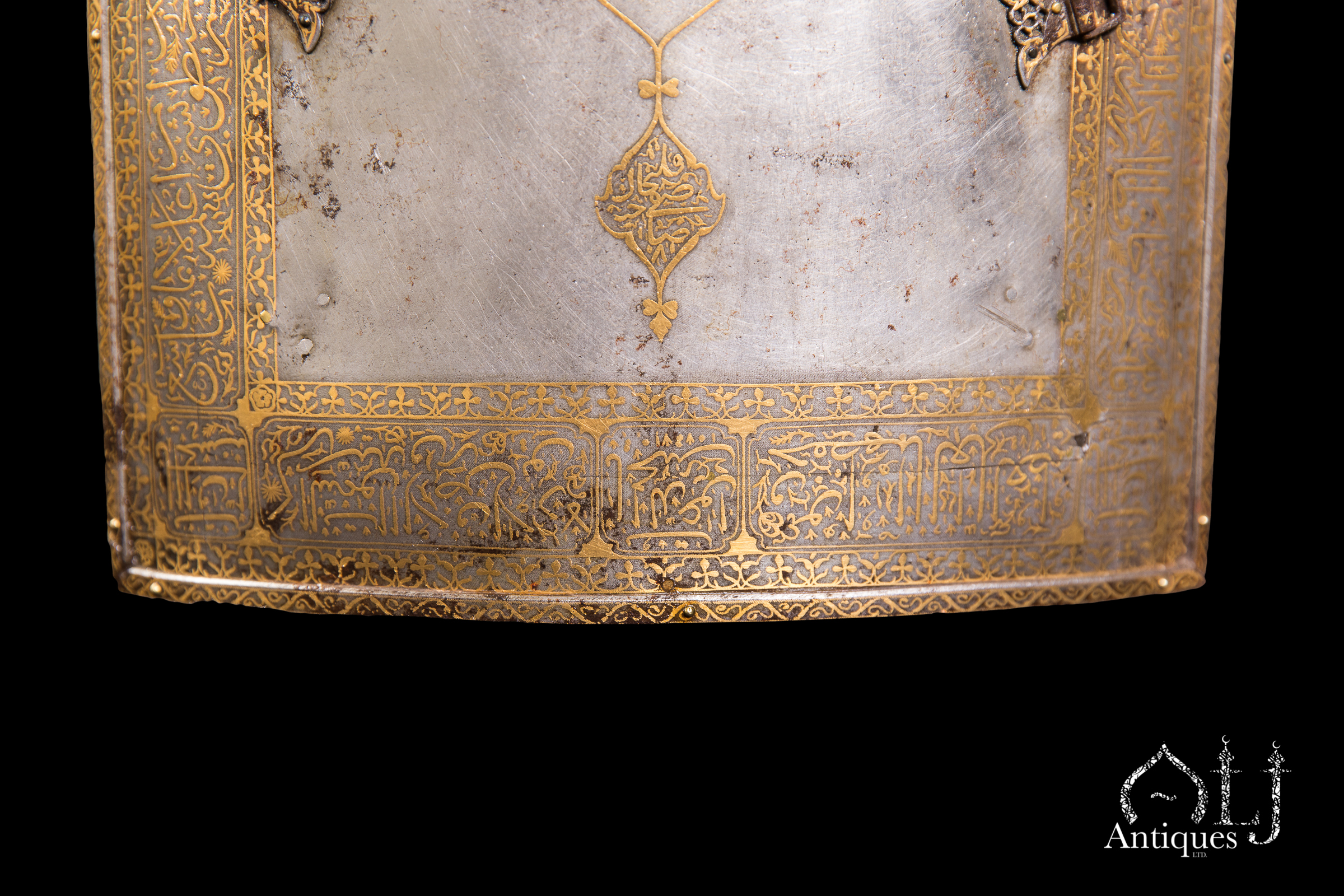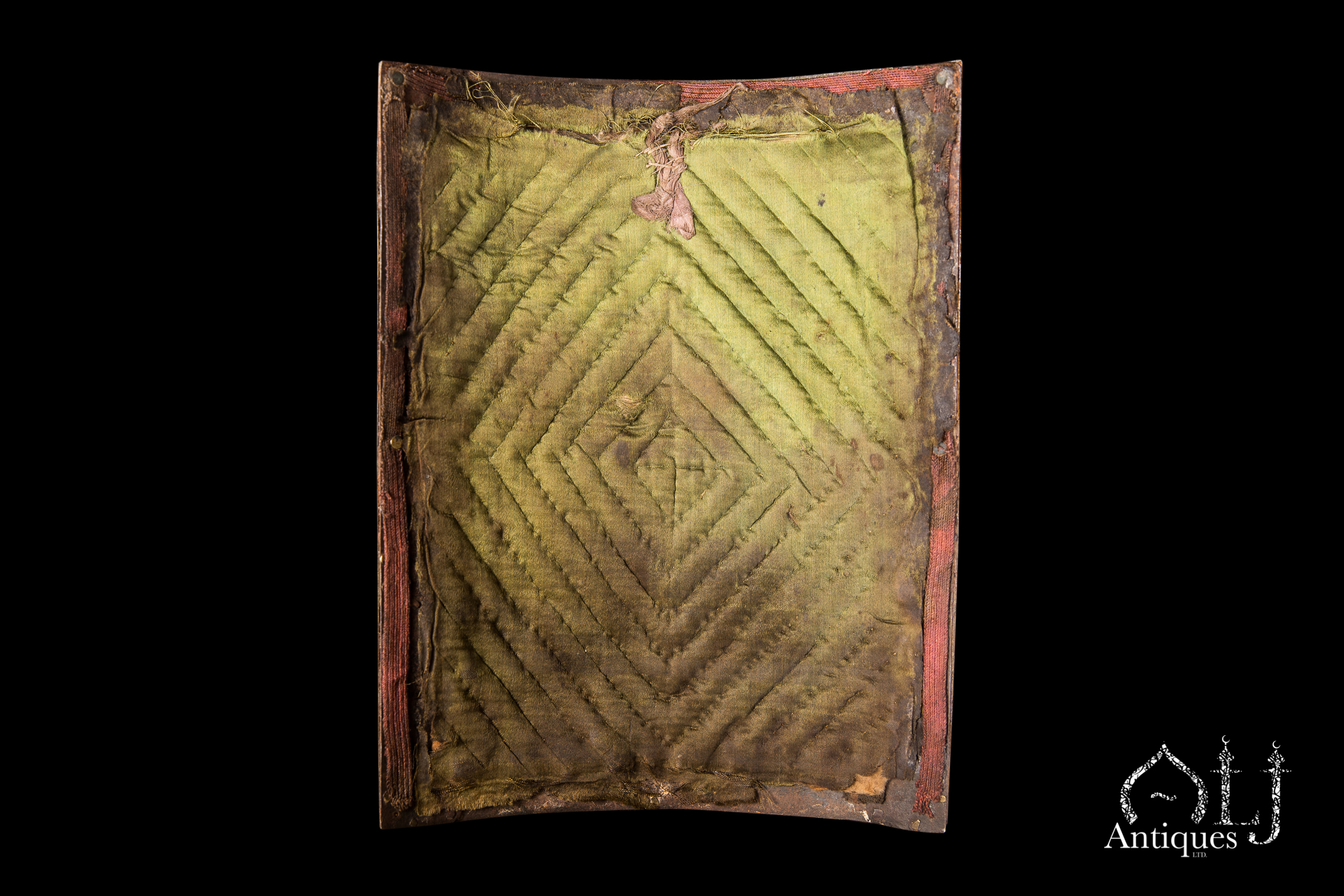Description
This exceptionally rare and important Chahar Ayne which is usually worn in face-to-face combat and covers the chest and belly areas and worn on top of the mail shirt is belonged to Safi Khan Lezgi or as he was better known as Safi (Qoli)” Khan.
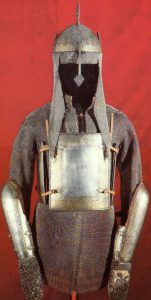
During the 17th. century Safavid dynasty period in Greater Iran, Safi Khan Lezgi was a Safavid official.
Safi Khan Lezgi was originally from a princely family native in Lezgian-Dagestan, Lezgins are a Northeast Caucasian ethnic group native to southern of Dagestan, currently under the republic of Russia and northeastern of Azerbaijan and the pupation speak the Lezgin language.,
Safi Khan Lezgi was the son of Aldas (Ildas) Mirza Shamkhal also known as Ildirim Khan Shamkhal of Kumukh.
During the reign of the Safavid Shah or King Safi (1629-1642) AD., and at a young age Safi Khan Lezgi was sent by his father to learn at the Safavid court in Isfahan-Iran.
At the Savaid Courts Safi Khan Lezgi was treated as a Safavid prince and as he grew up, he was renamed as Safi (Qoli)” Khan, also during the Safavid dynasty a title of Elkas or Alqas Mirza was given to the high-ranking individuals which effectively means a Safavid prince, governor and a military officer.
Safi (Qoli)” Khan name, (is been inscribed on the lower central cartouche with the relevant date of 1080 which is equivalent to 1669 AD.
Eventually from 1666-1674 AD., Safi (Qoli)” Khan was appointed as the governor or (Hakem) translating to the Wise of the Yerevan or Erivan Province (currently is the capital and the largest city of Armenia) also was known as Chokhur-e Sa’d (جخوري سعد), and for up to the early 1800s, Erivan was the centre of a Khanate which was then part of the Persian Empire.
Our one magnificent mirror Chahr Ayne is of a typical rectangular form and is fitted with six pierced clasps, the surrounding of the plate is of a frame like pattern and is mainly inscribed and overlaid with thick Gold and is decorated with Quranic verses in the most important, Royal and with the most sophisticated pattern of Arabic calligraphy which is the Thulth script, the backside of the Guard plate is lined with quilted green silk.
The Following is the full available script found on the plate with its relevant translation
The main inscription is part of sura Al-Baqarah (the cow), Ayat 255
ألله لا إله إلا هو الحي القيوم لا تأخذه سنة ولا نوم له ما في السماوات وما في الأرض من ذا الذي يشفع عنده إلا بإذنه يعلم ما بين أيديهم وما خلفهم ولا يحيطون بشيء من علمه إلا بما شاء وسع كرسيه السماوات والأرض ولا يوده حفظهما وهو العلي العظيم.
Allah – there is no deity except Him, the Ever-Living, the Sustainer of [all] existence. Neither drowsiness overtakes Him nor sleep. To Him belongs whatever is in the heavens and whatever is on the earth. Who is it that can intercede with Him except by His permission? He knows what is [presently] before them and what will be after them, and they encompass not a thing of His knowledge except for what He wills. His throne extends over the heavens and the earth, and their preservation tires Him not. And He is the Highest, the Greatest.
Also, Part of Sura Yusuf, Ayat 64
(فَاللّهُ خَيْرٌ حافِظاً وَهُوَ اَرْحَمُ الرّاحِمينَ) سورة یوسف آیه 64
(For God is the best of guardians, and He is the Most Merciful of those who show Mercy) Surat Yusuf, verse 64.
Also, Part of Sura AL-Hijr, Ayat 9.
(َإنا نحن نزلنا الذكر وإنا له لحافظون) سورة الحجر آیه٩
It is We (Allah) Who have sent down the Dhikr (i.e. the Quran) and surely, we will guard it (from corruption).
Also, there are eight square shaped cartouches that separates the various Quranic verses, all of which are prayers calling on Allah, which are as follows:
، يا رافع الدرجات، يا مجيب الدعوات، يا رافع الدرجات،
يا قاضي الحاجات، يا قاضي الحاجات،
يا رافع الدرجات؛ يا مجيب الدعوات، يا رافع الدرجات
O Allah, Raiser of Ranks – O Allah, Responder of Prayers – O Allah, Raiser of Ranks,
O Allah, Judge of Needs – O Allah, Judge of Needs,
O Allah Raiser of Ranks – O Allah, Responder of Prayers. – O Allah, Raiser of Ranks
The large central cartouche is inscribed with Nastaliq style script
نصر من الله وفتح قريب
Victory from God is Nearby.
Whereas the lowest cartouche is inscribed with the name ofصاحبه صفي قلي خان) ١٠٨٠) translating to Safi (Qoli)” Khan with the relevant date of 1080 which is equivalent to 1669 AD.

